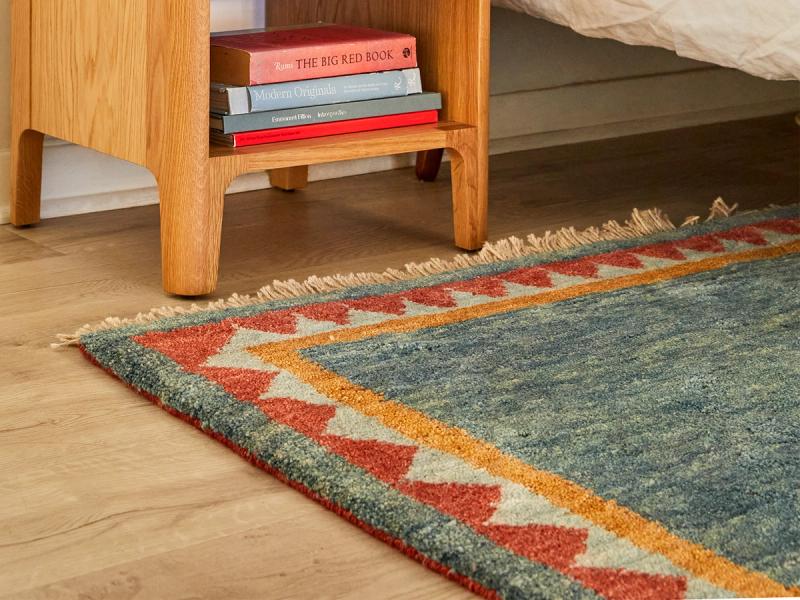Karam - Hand-knotted Wool Rug
Free Shipping





Related Products

Story Collection
These pieces are hand-knotted with a soft blend of sheep and lambswool. Often with painting-like frame borders, traditional gabbehs are thick, soft rugs tell stories in geometric detail, depicting whimsical and abstract worlds. Our artisan partner's unparalleled quality, expertise, and sense of artistry make them a popular choice for many higher-end brands around the world.
Karam
Hand-knotted Wool Rug
Free Shipping
Choose a Size
4' x 6'
You Do Need a Rugpad
Here's why
Low-profile rug pad
$69
Ready to Ship
Made by skilled artisans using time-honored techniques in Mirzapur, India
- 100% wool
- You may find traces of dried hay, grass, or straw in your rug as grazing sheep often collect plant matter in their coats. Remove gently by hand or with tweezers.
- Authentic wool fibers were used to weave this rug. Please note that when wool gets damp, it will smell like a wet sheep. This is the scent of lanolin, which acts as a waxy barrier against dirt and moisture.
- Medium pile (about .5" high)
- Color palette: coral, moss green, navy, prussian blue, tan, warm vanilla beige
- Contrast hand-bound edge detail
- This rug is the real thing-entirely hand-knotted by expert weavers, which is rare, as even "luxury" retailers frequently sell hand-tufted or hand-loomed substitutes
- Due to its handmade nature a 5% variance in size, color and texture is to be expected.
- Want this rug in a custom size? Click here
Related Products

Play Video
Story Collection
These pieces are hand-knotted with a soft blend of sheep and lambswool. Often with painting-like frame borders, traditional gabbehs are thick, soft rugs tell stories in geometric detail, depicting whimsical and abstract worlds. Our artisan partner's unparalleled quality, expertise, and sense of artistry make them a popular choice for many higher-end brands around the world.

Salmon / 4' x 6'
Change






